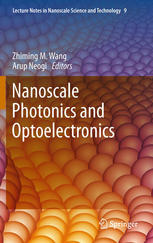

Most ebook files are in PDF format, so you can easily read them using various software such as Foxit Reader or directly on the Google Chrome browser.
Some ebook files are released by publishers in other formats such as .awz, .mobi, .epub, .fb2, etc. You may need to install specific software to read these formats on mobile/PC, such as Calibre.
Please read the tutorial at this link: https://ebookbell.com/faq
We offer FREE conversion to the popular formats you request; however, this may take some time. Therefore, right after payment, please email us, and we will try to provide the service as quickly as possible.
For some exceptional file formats or broken links (if any), please refrain from opening any disputes. Instead, email us first, and we will try to assist within a maximum of 6 hours.
EbookBell Team

4.4
82 reviewsThe intersection of nanostructured materials with photonics and electronics shows great potential for clinical diagnostics, sensors, ultrafast telecommunication devices, and a new generation of compact and fast computers. Nanophotonics draws upon cross-disciplinary expertise from physics, materials science, chemistry, electrical engineering, biology, and medicine to create novel technologies to meet a variety of challenges. This is the first book to focus on novel materials and techniques relevant to the burgeoning area of nanoscale photonics and optoelectronics, including novel, hybrid materials with multifunctional capabilities and recent progress in the understanding of optical interactions in nanoscale materials and quantum-confined objects. Leading experts provide a fundamental understanding of photonics and the related science and technology of plasmonics, polaritons, quantum dots for nanophotonics, nanoscale field emitters, near-field optics, nanophotonic architecture, and nanobiophotonic materials. Key Features: Provides a comprehensive review of the fundamental knowledge of nanometer-scale light-matter interactions with emphasis on new principles and technologies. Describes applications to photonics, bioengineering, nanofabrication, information technology, and communications. Bridges between electronics and photonics by including novel hybrid materials with multifunctional capabilities.